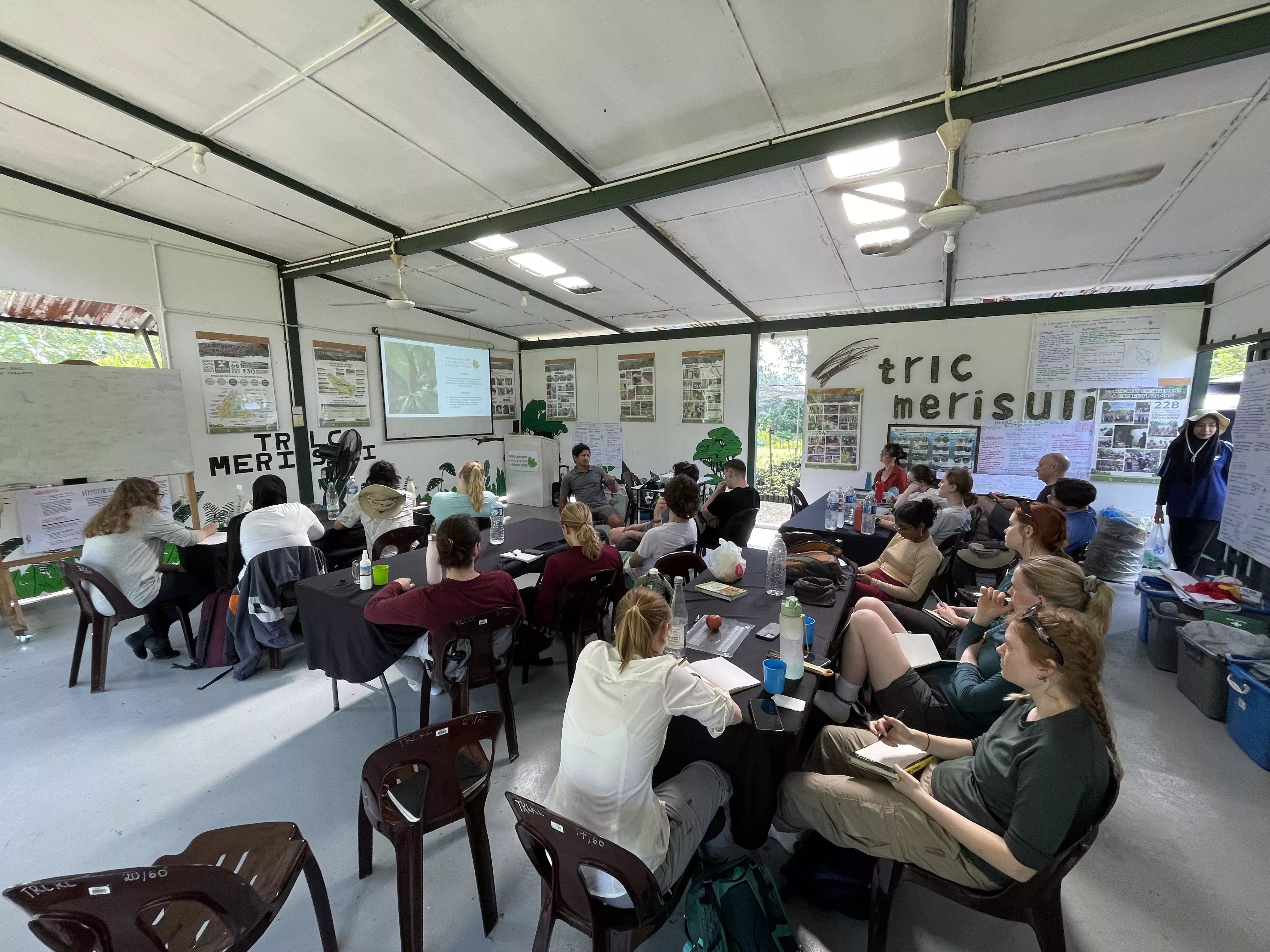14 July 2023
Three life changing moments from a student in Borneo
My name is Karl, I'm an MSc in Biodiversity and Conservation student specialising in Conservation and Restoration, and this is how my time in Sabah, Malaysian Borneo has changed my life.

How do I begin a story that changed my life?
After a day to acclimatise to the warm weather of Malaysian Borneo, we finally embarked on the road to Danum Valley Conservation Area, one of the world’s oldest tropical forests.
As we approached the forest, elephant families scattered along the road. The babies were guarded by their adult relatives, creating huge but gentle herds. It was a warm welcome. The MSc students and I were there for our field course to immerse ourselves into the heart of tropical forest conservation and restoration.
When we arrived at our dormitories in the evening, we could hear the chorus of cicadas and crickets fill the air. In the following days, we encountered all forms of plant, animal and fungal life.
Our experienced field assistants showed us their current work to document biodiversity, including a visit to a new fungi lab equipped with the latest scientific equipment. We then started to investigate Danum's diversity - particularly insect diversity - using various methods from bait traps to quadrats. It was all so eye-opening.


Flagship of the forest
During this intense period of learning, one of my first life changing moments was before an important lecture on forest conservation in Sabah.
We were eating breakfast and watching hornbills fly over us. Suddenly, one of our research assistants got excited. He told us there was an orangutan mum and its baby across the river. My MSc friends rushed down to find the family. Through our binoculars, we saw the family hiding behind thick vines. And then we heard news of a male orangutan on a tree nearby the canteen.
It was minutes before our forest conservation lecture. Our lecturer was kind enough to postpone the lecture to let us see the orangutan. We trekked fast into the forest. We looked up and the male orangutan was above us, going about its day completely unbothered by our presence.
In that moment, I knew the forest was special. Seeing the flagship animal for Borneo’s rainforest just metres away from the ground touched everyone’s hearts. It was comfortable in its native habitat.
Back at our lecture, we learnt how precious DVCA is, as other forests in Sabah were extracted for timber resources. DVCA is the stronghold and refuge for Borneo’s wildlife today and the future of its forest’s inhabitants.


Towering trees
The second life-changing moment was our last hike into the forest.
Alongside the many majestic animals, we saw small mushrooms dotted through the leaf litter. Some were the mushrooms of ectomycorrhizal fungi, a type of fungi that form an essential mutual relationships with the tall trees of the Dipterocarp family that dominate the forests of Southeast Asia.
Along our hike, there was a forest gap. As we emerged from the undergrowth, we were towered by the giant trees that made us feel small like the mushrooms. Their tree trunks were straight poles with cauliflower heads attached to their tops. Their dense canopies covered the sky.
Like all interconnected wildlife in Danum Valley, it is amazing how the small mushrooms and tall trees co-exist to create this great forest.


The future lies with people
In the second week of our field course, we left Danum Valley to learn about reforestation at the Sabah Tropical Rainforest Living Collection, managed by the Malaysian Tropical Rainforest Conservation and Research Centre.
The role of the living collection is to support the survival of Sabah’s most threatened Dipterocarp tree species. As part of this, they provide seedlings to reforestation projects around the region.
One night, I was drinking tea in the education centre with the living collection manager. I wanted to clarify a question from his previous lecture. The clarification turned into a two-hour conversation on reforestation.
That was my third life changing moment. I realised the enormous effort to engage local communities.
The manager described the steps taken to build trust and find opportunities to build the capacity of local communities, especially for marginalised youth. From working with the organisation, community members learnt the skills to take care of young plants and participate directly in restoration projects.
People rely on the forests, their futures are connected. When the forests return, they bring with them access to ecosystem services that fuel the livelihoods of countless people. Reforestation is not just a scientific and technical endeavour, it is also very human.

When I return to Singapore, I will bring these moments back with me. The rare opportunity to join Kew on a field course has been fruitful. I gained new perspectives in Conservation and Restoration and appreciate the tireless work from scientists to practitioners.
The solution to combat biodiversity loss is a massive team effort. Biodiversity does not only provide us with clean air and water, but it also inspires us constantly. This field course and MSc programme showed me that.




